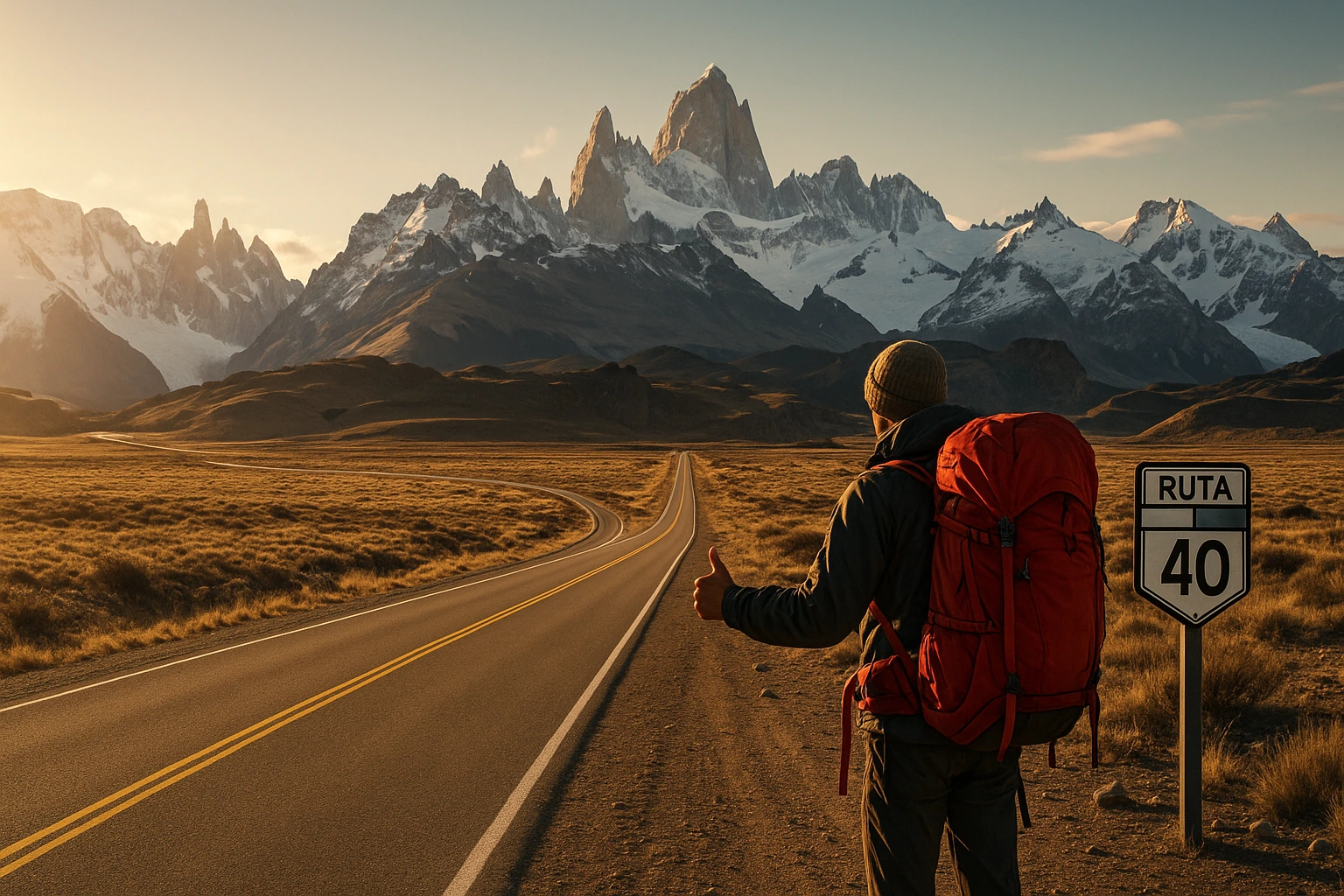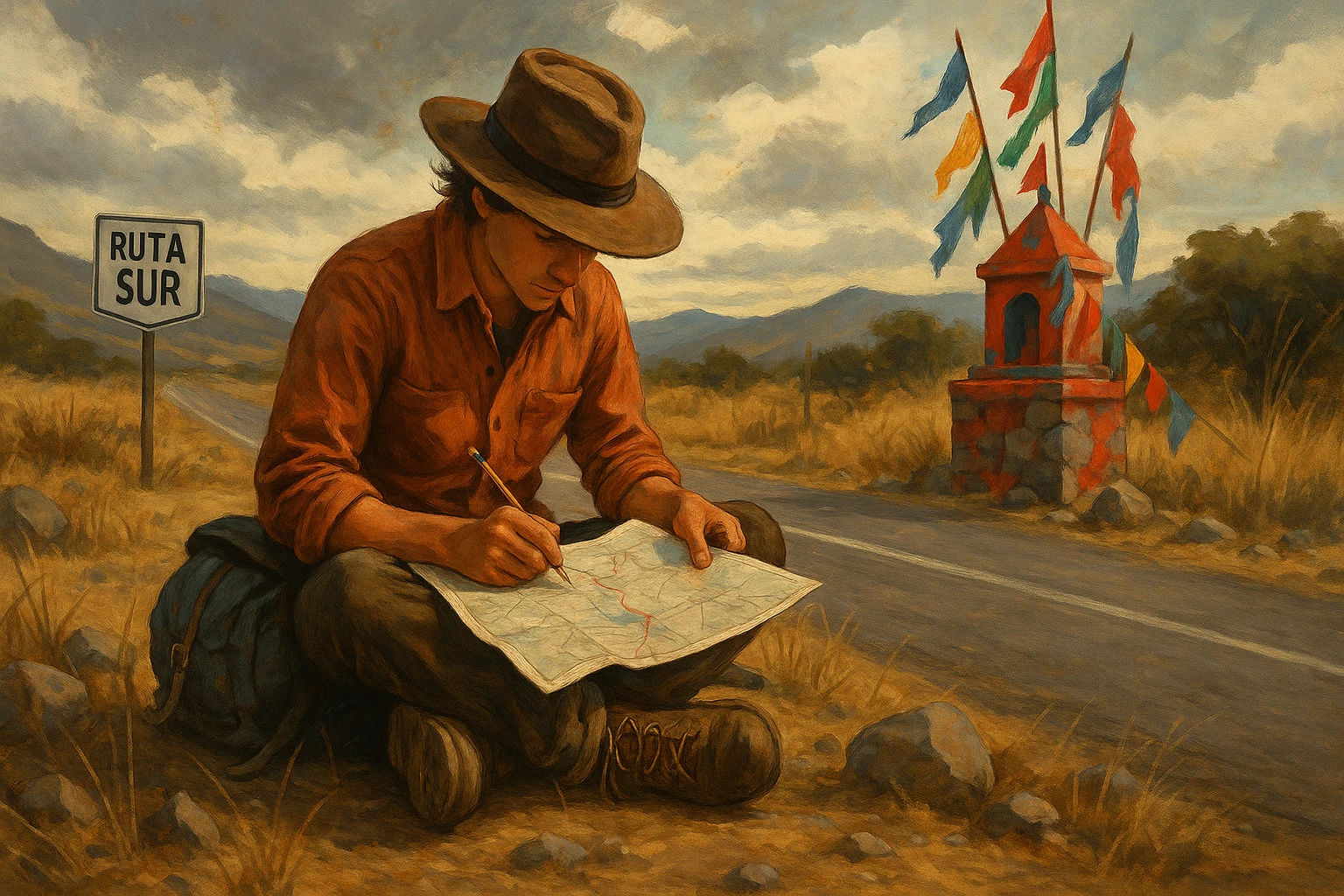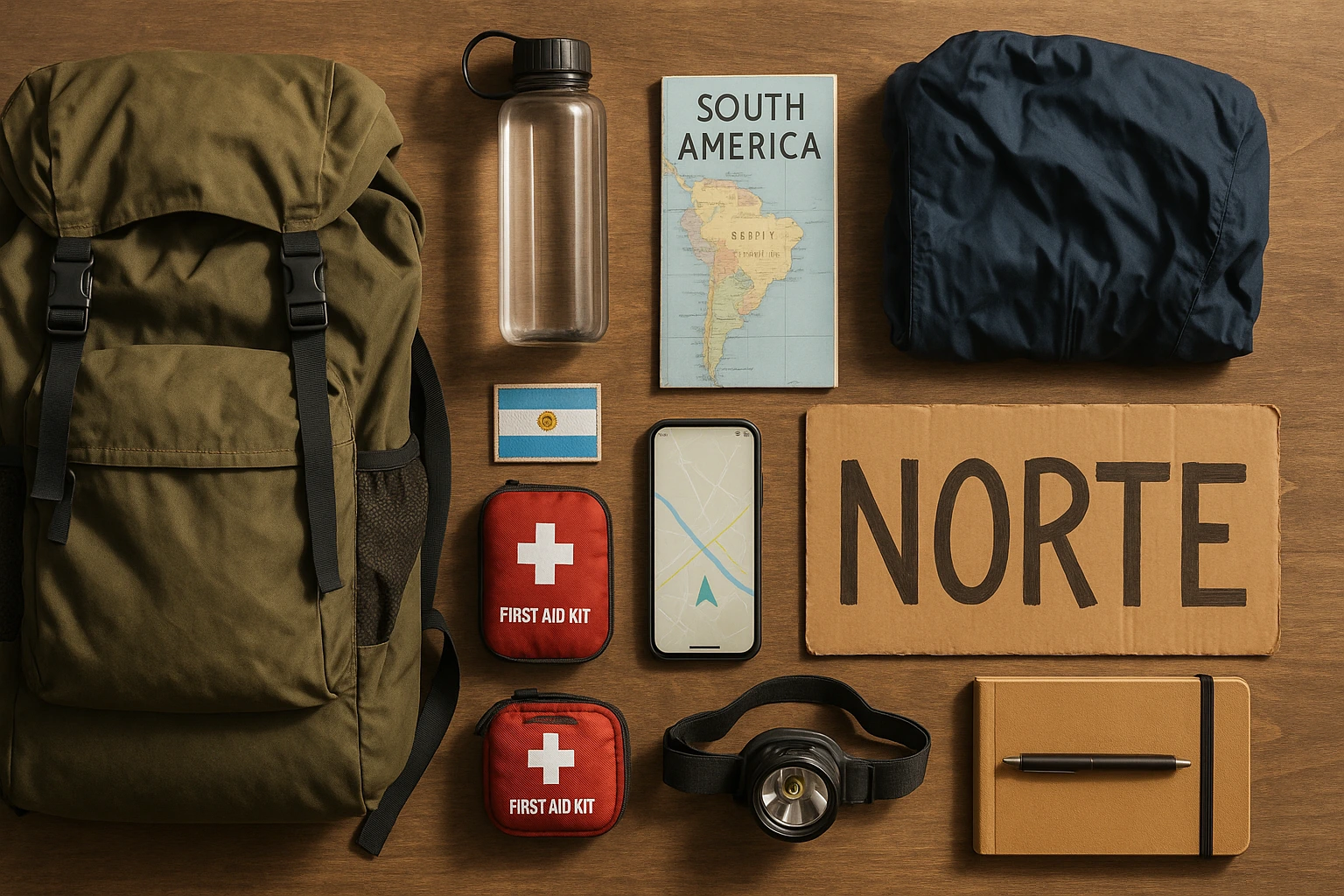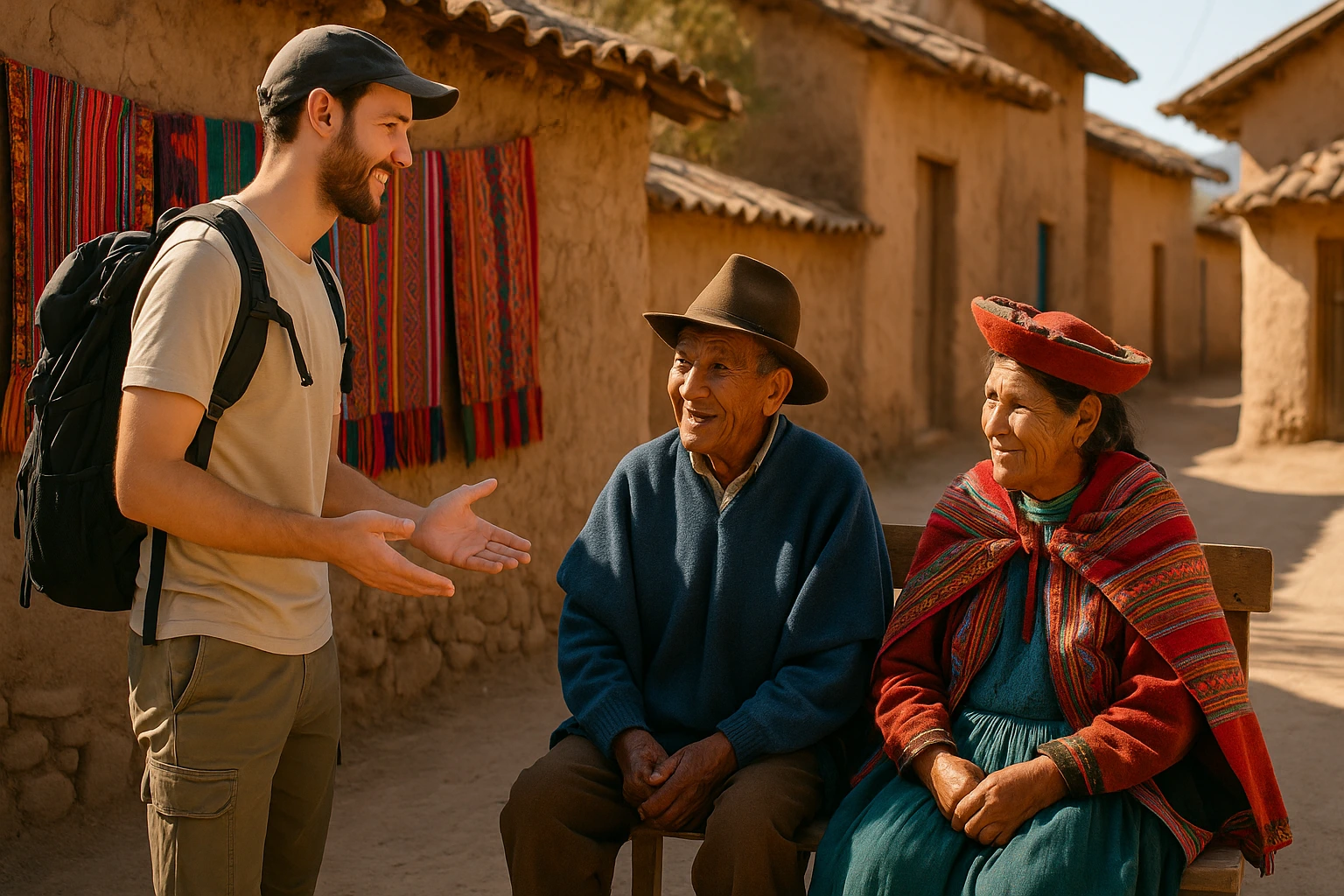
Ready to hitchhike safely in South America? You’ll get clear steps, a 1-minute safety check, and field-tested tips so your plan is solid before you stick your thumb out. Picture this: you’re on a dusty road in Patagonia with the Andes rising ahead. A friendly local stops, and soon you’re sharing stories over mate as you cruise toward adventure. This guide gives you practical tips, from picking smart routes to packing the right gear and respecting local customs.
What to do first: choose a major corridor, set a daylight cutoff, and share your live location before you stick your thumb out.
Run the Safety AssessmentTable of Contents
- Key Takeaways: How to Hitchhike Safely in South America
- Why Hitchhike in South America?
- Understanding Hitchhiking Risks
- Where to Hitchhike: Safer Spots in South America
- Essential Gear for Safe Hitchhiking
- Golden Rules to Stay Safe While Hitchhiking in South America
- Hitchhiking Safety Assessment
- Reading Social Cues for Safety
- Solo Hitchhiking Tips
- When to Walk Away
- Creating Effective Hitchhiking Signs
- Cultural Tips for Hitchhikers
- Staying Connected While Hitchhiking
- Budgeting for Your Journey
- FAQs About Hitchhiking Safely
- Conclusion: Adventure Awaits
Key Takeaways: How to Hitchhike Safely in South America
- Know the lay of the land: safety shifts by region, so research ahead and learn a few Spanish or Portuguese basics.
- Pack like a pro: bring a first-aid kit, water, and a local SIM to stay connected.
- Talk smart, stay respectful: be clear about your destination and read local norms.
- Stay flexible: plans change, and detours often become the best stories.
Why Hitchhike in South America?
Hitchhiking here feels like stepping into a living storybook. You might hop in a truck with a Chilean farmer who shares tales of the Andes or chat with a Brazilian driver about life by the coast. It’s also a wallet-friendly way to travel, leaving more cash for side trips. Safety comes first though, and a simple plan keeps risks low and the good vibes high. For more travel wisdom, check out lessons from the road.
“Hitchhiking isn’t just about getting somewhere, it’s about the people you meet and the stories you share.”
Understanding Hitchhiking Risks
Hitchhiking’s possible, but it carries real trade-offs. Know them, plan around them, and you’ll travel smarter. Petty theft happens around transport hubs, so keep valuables tucked away. Decline rides from anyone who seems impaired or aggressive. Weather can rough up roads, and language gaps in rural areas cause mix-ups. Remote stretches can mean long waits, so carry water and a backup plan. Before a long stretch, check your country’s official travel advisories for current road and regional guidance.
Where to Hitchhike: Safer Spots in South America
If you plan to hitchhike safely in South America, start by researching country-by-country norms. Safety varies by country, which makes route research worth the time.
Generally Safer Countries
- Argentina: Patagonia has scenic, well-traveled routes.
- Chile: stable and friendly, especially in the south.
- Uruguay: known for its welcoming culture.
- Ecuador: Quito to Cuenca is popular; avoid border areas.
Places Requiring Extra Caution
- Peru: stick to main routes and skip remote areas at night.
- Colombia: improving, but avoid conflict zones.
- Brazil: major highways are best, city edges can be risky.
- Bolivia: petty crime exists in rural areas.
- Paraguay: less common and waits can be long.
- Venezuela: generally avoid due to instability.
Tips for Safer Routes
- Favor major highways with steady traffic.
- Avoid night travel.
- Ask locals and travelers for current advice.
- Consider buses where risk is higher, as suggested by Lonely Planet’s South America hub.

Essential Gear for Safe Hitchhiking
Hitchhiking gear doesn’t need to be fancy, just reliable. The right kit keeps you comfortable and safe. If you’re documenting the journey, here are adventure photography tips you might like.
Hitchhiking Gear for Safer Travel
- Backpack: durable and comfortable.
- Water bottle: hydrate in hot climates.
- First-aid kit: bandages, meds, blister care.
- Headlamp: handy in low light.
Additional Gear for Safer Travel
- Rain layer: good for sudden showers.
- Sunscreen: high-UV protection.
- Local SIM card: for maps and calls.
- Sign: a clear destination helps drivers.
- Personal alarm: simple deterrent.

Golden Rules to Stay Safe While Hitchhiking in South America
These hitchhiking safety tips may help you stay steady on the road:
- Trust your gut: decline rides that feel off.
- Vet drivers: read demeanor and vehicle condition.
- Communicate clearly: set your destination and boundaries at the start.
- Share location: keep trusted contacts updated.
- Stay alert: scan your surroundings.
If it’s legal where you’re traveling, consider a personal safety device and learn your local laws first. When possible, travel with a buddy for added support.
“Your instincts are your best guide. Trust them to keep you safe.”
Hitchhiking Safety Assessment
Before you hit the road, use this quick tool to pressure-test your plan. It weighs your experience, location, and timing, then suggests a safer tweak if needed.
Interactive Tool for Safer Hitchhiking
Solo Hitchhiking Tips
Solo hitchhiking tips start with simple guardrails. Share your itinerary with one person who will notice if you go quiet. Use location sharing, stick to busy corridors, and decide on a daylight cutoff before you start. For a related adventure, read about bikepacking across the West.
Solo Hitchhiking Tips: Practical Precautions
- Share your itinerary with family or friends.
- Use tracking apps like Find My Friends.
- Stick to busy routes and known corridors.
Self-Defense Tips
- Learn a few basic escapes and blocks.
- Carry a personal alarm.
When to Walk Away
Say no if a driver seems intoxicated or the car feels unsafe. If a ride makes you uneasy, thank them and step out at the next safe pull-off. Your safety comes first, every time.
Creating Effective Hitchhiking Signs
Keep it clean and simple. Big block letters on sturdy cardboard, one destination or direction, and a friendly wave. Drivers decide in a second, so make that second easy.
Cultural Tips for Hitchhikers
Respect builds trust fast. Learn greetings in Spanish or Portuguese, dress practical and modest, and steer clear of sensitive topics like politics. A little cultural curiosity opens a lot of doors.

Staying Connected While Hitchhiking
Buy a local SIM at arrival, cache offline maps, and skim local news before long stretches. Even a ten-minute prep session can save an hour on the shoulder.
Budgeting for Your Journey
Hitchhiking cuts transport costs, but daily spending still matters. Set a simple budget, cook a few meals, and keep a small buffer for safe lodging if you need to stop early. If you like low-cost adventures, consider starting bikepacking as a complementary option.
FAQs About Hitchhiking Safely
Hitchhiking is generally legal in most South American countries, but regulations vary. For instance, Argentina and Chile have no explicit laws against it, while Brazil may restrict it on certain highways. Always check local laws and avoid restricted areas.
Argentina, especially Patagonia, is often considered one of the safest thanks to friendly locals and good infrastructure. Chile and Uruguay are also relatively safe, but always check current conditions for the specific region you’ll visit.
Women can hitchhike solo but face higher risks. Stick to well-traveled routes, share your live location with trusted contacts, and trust your instincts. Whenever possible, pair up with another traveler.
Start with daylight rides and stick to busy corridors. Share your live location before you hop in, set boundaries upfront, and step out at the next safe stop if anything feels off. Simple moves like these keep your plan solid and reduce avoidable risk.
Ask to be let out at the next safe stop. If the situation escalates, use a personal alarm or contact local authorities. Share your live location with someone before you get in the car.
Conclusion: Adventure Awaits
Hitchhiking in South America is thrilling, and it pays to be deliberate. Choose strong corridors, travel by daylight, communicate clearly, and check your plan with the assessment above. Do that, and you’ll stack the odds in favor of great stories.
Travel conditions and local laws can change quickly. This guide is informational and not legal, security, or medical advice. Check official travel advisories for your destinations (e.g., national foreign-affairs sites) before you go, follow local regulations, and make choices that fit your comfort level and current conditions.
Reading Social Cues for Safety
Body language matters. Warm eye contact and relaxed posture are green lights. Pushy tone, evasive answers, or rushed behavior are red flags. If your stomach flips, listen to it and wait for the next ride.